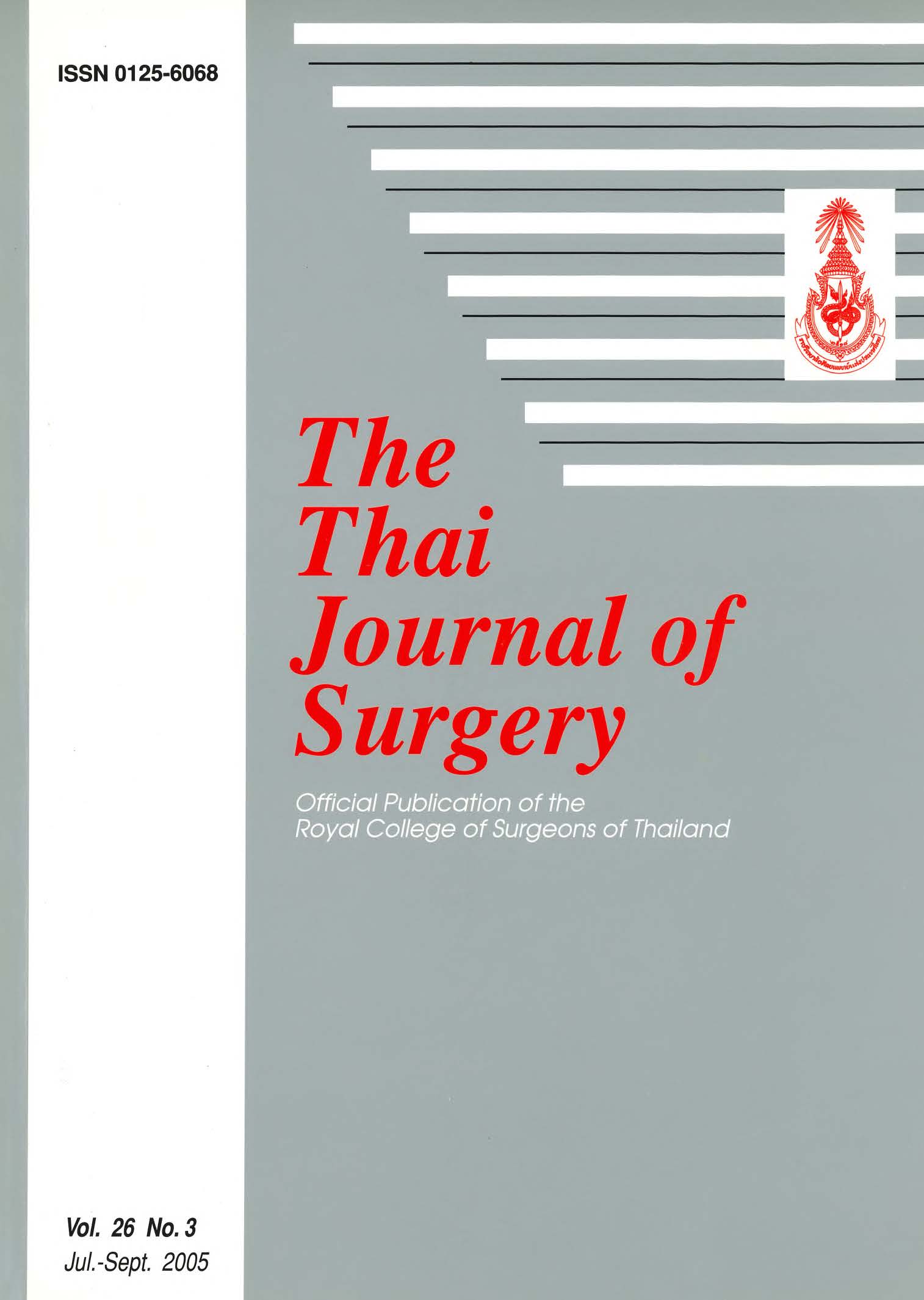The Radiographic Measurement of the Acetabular Diameter of Cadavers in Comparison to the Direct Measurement
Abstract
Background: In the surgical procedure of the acetabulum, especially in the total hip arthroplasty, it is necessary to evaluate the diameter of the acetabulum as a step in the preoperative planning. According to previous studies in the radiographic measurement of the acetabulum, the iliac oblique view gave the most accurate value comparing to the direct measurement of the cadaver pelvis.
Objective: To find a new view of radiograph that gives a more accurate measurement than the iliac oblique view
Materials and Methods: This study was performed in 10 cadavers; 5 males and 5 females with the mean age of 69.7 years (range 42-86 years). Twenty hips were studied by taking their radiographs in 10 positions: 90 degrees (AP view), 80 degree, 70 degree, 60 degree, 50 degree, 40 degree, 30 degree, 20 degree, 10 degree and 0 degree. The cadaver pelvis was placed on the x-ray machine in antero-posterior view and was rotated in 10 degree steps. The direct measurement of the acetabular diameter in the cadaver and the measurements in all views of pelvic radiographs were accomplished by using a Vernier caliper. The landmark to be measured was in the direction from the anterior superior iliac spine to the ischial tuberosity. Intraobserver and interobserver reliability of all methods were evaluated by having 3 physicians each performed 3 measurements. Each observer measured each radiograph 3 times with an interval of 2 weeks between each reading.
Results: The mean diameter of the acetabulum measured directly from the cadaver was 44.18 mm. ± 4.44 mm., while those measured from the pelvic radiographs in 90 degree, 80 degree, 70 degree, 60 degree, 50 degree, 40 degree, 30 degree, 20 degree, 10 degree and 0 degree were 56.16 ± 3.97 ,55.14 ± 4.81,54.13 ± 4.48, 52.67±4.88,51.59±4.96,50.74±4.65,49.13±4.68,47.63±4.59,45.47±4.43, and 44.44±4.68 mm. respectively. The 0 degree view gave the most accurate value. The diameters measured from the 0-40 degree views were not statistically different from that obtained from the direct measurement, while the diameters measured from the 50-90 degree views were statistically different (p-value <0.001). The intraobserver and interobserver reliability of the 3 observers showed excellent correlations (p-value <0.001).
Conclusions: From our study, the O-degree view of the pelvic radiograph provided the most accurate value comparing with the direct measurement. The O-degree view is the best view of the pelvic radiograph for measuring the acetabular diameter as a step in the preoperative planning for hip arthroplasty and as a guide to choose the proper prosthetic size.
References
2. Dossick PH, Dorr LD, Gruen T, Saberi MT. Techniques for preoperative evaluation of noncemented hip arthroplasty. Techniques Orthopedics 1991; 6: 221-245
3. Spatz K, Debra K. Measurement of acetabular index intraobserver and interobserver variation. J Pediatr Orthoped 1997;17:174-6.
4. Nelitz M, Guenther KP. Reliability Of radiological measurements in the assessment of hip dysplasia in adults. Brit J Radiol 1999;72: 331-34.
5. Johns HE, Radiographic magnification, In: The physics at radiology. 4th ed. 1983. p. 588-669.
6. Dendy PP, B Heaton. Radiographic distortion ang magnification, In: Physics for radiologist. 3rd ed, 1987. p. 16%. 71.
7. Ballinger PW, Frank ED, Merrill's atlas of radiographic positions and radiographic procedures. 9th ed. St, Louis: 1999. p. 412
8. Cowell HR. Editorial, Radiographic measurements and clinical decisions. J Bone Joint Surg Am 1990; 72: 319-21.
Downloads
Published
How to Cite
Issue
Section
License
Articles must be contributed solely to The Thai Journal of Surgery and when published become the property of the Royal College of Surgeons of Thailand. The Royal College of Surgeons of Thailand reserves copyright on all published materials and such materials may not be reproduced in any form without the written permission.



